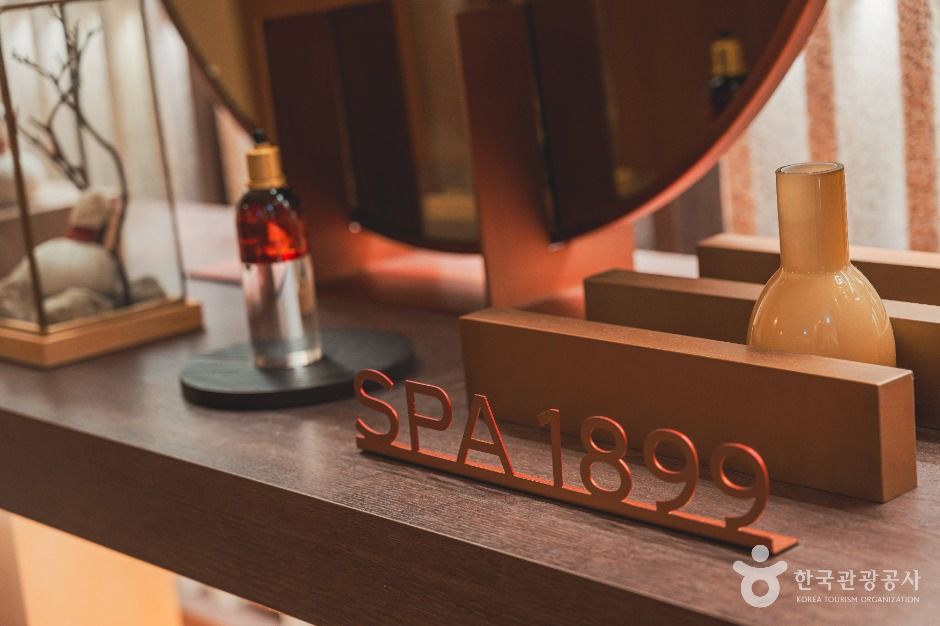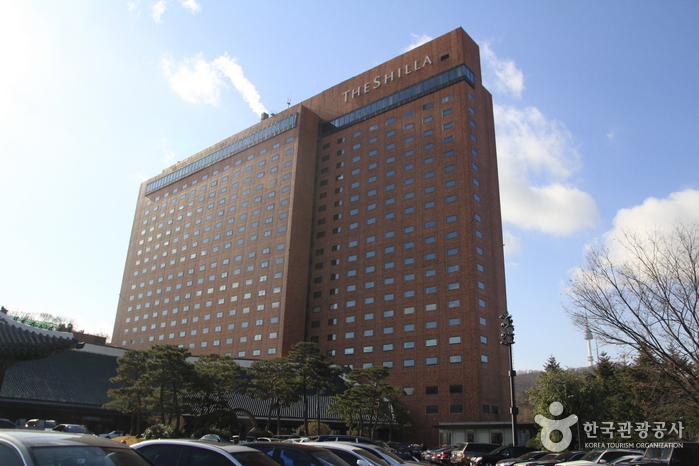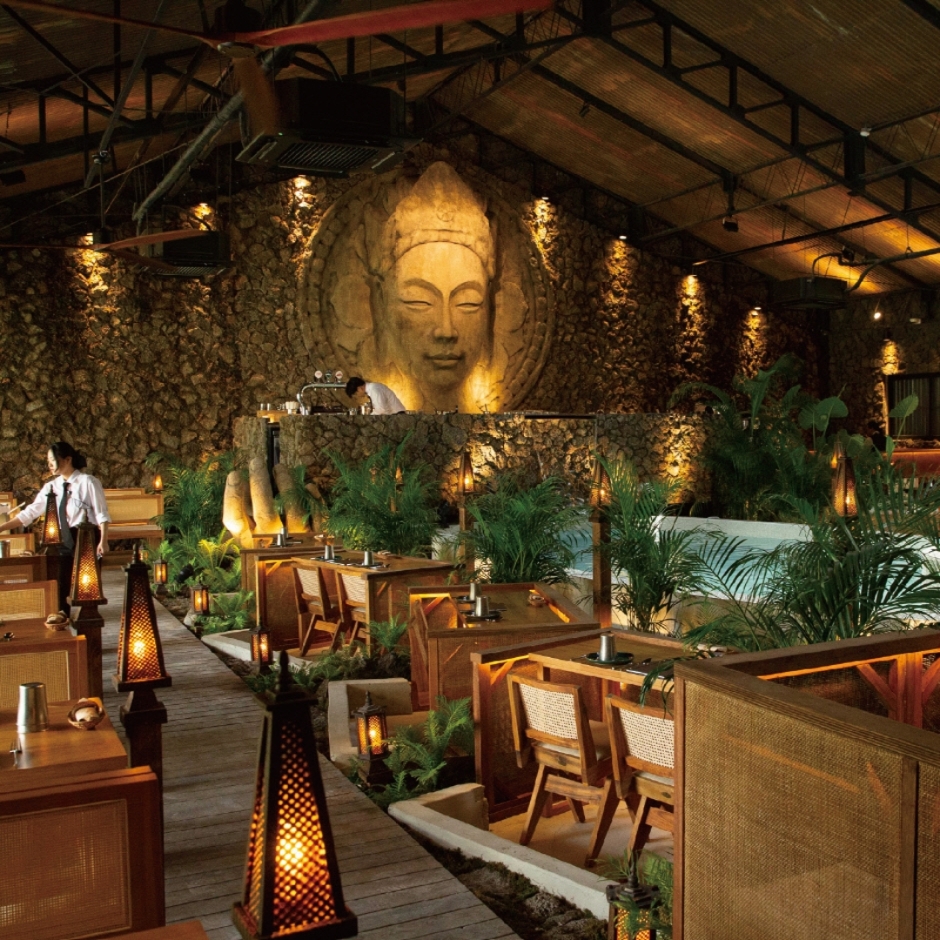Spa 1899 Donginbi (SPA 1899 동인비)
4.4Km 2025-09-02
416 Yeongdong-daero, Gangnam-gu, Seoul
In traditional Korean medicine, summer is the season when one's energy is severely depleted as people tend to sweat a lot even with little movement. As you are more likely to feel fatigued and lose vitality, replenishing one's energy is crucial. According to Donguibogam, a traditional Korean medical encyclopedia, red ginseng is recommended for vitality. The book says red ginseng slows the aging process and boosts one's energy, helping you live longer. It's effective in restoring vitality and alleviating fatigue. Red ginseng is made by steaming ginseng for approx. 3 hours without peeling it and then letting it dry slowly. This steaming and drying process reduces ginseng's sugar level while creating an active compound, which enhances its efficacy. Saponin, which is abundant in red ginseng, is known for boosting one's immunity and restoring vitality. Notably, ginsenoside helps with digestion, metabolism, and the absorption of nutrients, thereby restoring one's energy. SPA 1899 Donginbi, run by the premium red ginseng brand Jung Kwan Jang, is a specialized spa facility that uses beneficial red ginseng.
Seongsu-dong Handmade Shoes Street (성수동 수제화거리)
4.4Km 2025-03-15
15, Yeonmujang 7-gil, Seongdong-gu, Seoul
Handmade shoe manufacturers began to gather in the 1970s to form a street and make history. Today, there are some 350 handmade shoe manufacturers, 100 intermediate processing and raw materials companies, and new cafes with unique vibes opening up one after another. Thanks to its vintage appeal, many people visit on dates and to take cool photos.
The Shilla Seoul (신라호텔(서울))
4.4Km 2021-05-31
249, Dongho-ro, Jung-gu, Seoul
+82-2-2230-3311
The Shilla Seoul is a luxury hotel with an outdoor sculpture garden and Guerlain Spa. Other facilities include a fitness center, sauna, swimming pool, business center, restaurants, and more. The hotel also offers guests a free shuttle bus to Myeongdong and Dongdaemun shopping centers.
Haru&Oneday (하루앤원데이)
4.4Km 2024-10-18
92, Achasan-ro, Seongdong-gu, Seoul
SUPER JUNIOR Donghae
This is a cafe run by SUPER JUNIOR’s Donghae, and inside the cafe, photos taken by Donghae himself are displayed. It is decorated in a quiet and cozy manner with a modern atmosphere, and the photo zone for taking mirror shots is considered a specialty. Milk tea made at the store is popular. Desserts and drinks are delicious, but there are tables with plugged-in outlets, so it has become known as a good cafe for working or studying on a laptop.
Davich Optical - Dogok Branch [Tax Refund Shop] (다비치 도곡점)
4.4Km 2024-04-18
1F, 206, Seolleung-ro, Gangnam-gu, Seoul
-
The Shilla Duty Free Shop - Seoul Branch (신라면세점 (서울점))
4.4Km 2022-08-05
249, Dongho-ro, Jung-gu, Seoul
+82-1688-1110
The Shilla Duty Free Shop Seoul Store is located inside The Shilla Seoul Hotel. The duty free shop has over 400 brand stores that sell perfume, cosmetics, clothes, bags, watches, and jewelry, all of which can be purchased at discounted prices. Convenient amenities and services such as the rooftop cafe, free valet parking, and an outdoor sculpture park are also prepared so that customers can enjoy a carefree shopping experience.
Geumdwaeji Sikdang (금돼지식당)
4.4Km 2024-10-17
149 Dasan-ro, Jung-gu, Seoul
Geumdwaeji Sikdang is renowned as one of the top three pork restaurants in Seoul, specializing in pork dishes. Its signature menu item is the nunkkon moksal (grilled pork shoulder), known for its marbled appearance resembling snowflakes. Bonsamgyeop (grilled bone-in pork belly) and deungmoksal (short loin and pork shoulder) are also popular choices. They offer fragrant basil wraps as a side dish, which perfectly complements the slightly grilled basil with the juicy and flavorful meat, creating a harmonious taste sensation that is considered a delicacy at this establishment.
Seoul National Cemetery (국립서울현충원)
4.4Km 2024-03-07
210, Hyeonchung-ro, Dongjak-gu, Seoul
+82-2-813-9625
Seoul National Cemetery is a national cemetery for individuals who worked or fought for Korea and sacrificed their lives. It encompasses those who fought for Korea's independence from the late 19th century to the early 20th century, those who perished in the Korean War (1950-1953), and former presidents, totaling over 165,000 individuals. There are exhibition halls and parks with related artifacts. Shuttle buses are provided for the convenience of visitors.
Olive Young - Seongdong Seongsu Branch [Tax Refund Shop] (올리브영 성동성수)
4.4Km 2024-04-17
#101, and #102, 47, Seongsuil-ro 6-gil, Seongdong-gu, Seoul
-
Saladaeng Temple (살라댕템플)
4.4Km 2024-03-12
32 Seongsui-ro 16-gil, Seongdong-gu, Seoul
Saladaeng Temple is a French fusion restaurant based on Thai cuisine. It is also known for being accessible by boat. Inside, there is an emerald-colored swimming pool, a central Buddha statue, and grand Buddha statues on the walls. The signature menu features Saladaen temple samdan tray (Saladang Temple three layer tray) with dim sum, deep-fried oysters, shrimp tart, salmon, creme brulee, financier, fruits, and more.




![Davich Optical - Dogok Branch [Tax Refund Shop] (다비치 도곡점)](http://tong.visitkorea.or.kr/cms/resource/56/2890556_image2_1.jpg)

![Olive Young - Seongdong Seongsu Branch [Tax Refund Shop] (올리브영 성동성수)](http://tong.visitkorea.or.kr/cms/resource/82/2878782_image2_1.jpg)

 English
English
 한국어
한국어 日本語
日本語 中文(简体)
中文(简体) Deutsch
Deutsch Français
Français Español
Español Русский
Русский